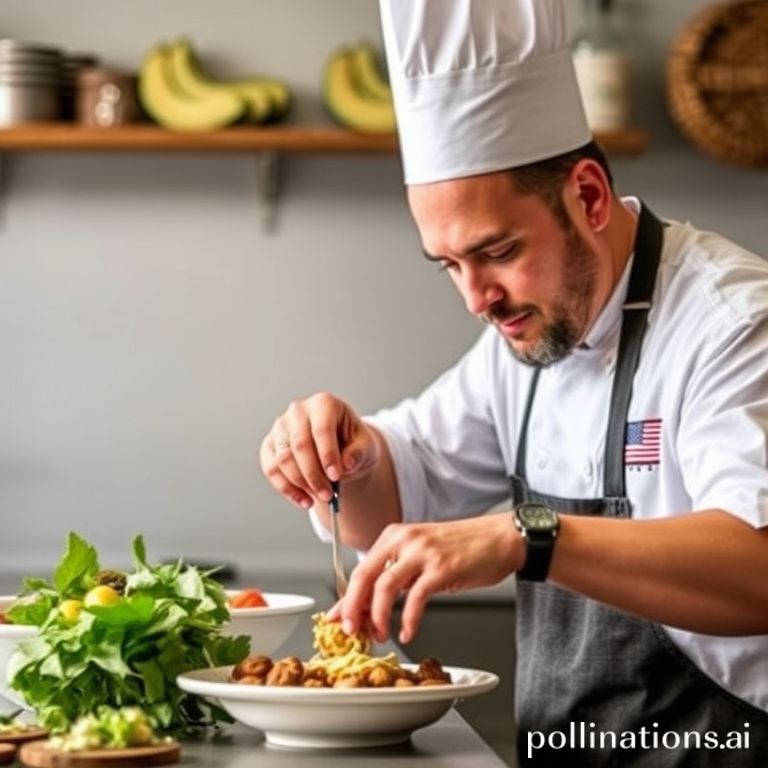Mexican cuisine, a vibrant tapestry woven from indigenous roots and Spanish influences, is more than just tacos and enchiladas. It’s a living, breathing entity, constantly evolving while still honoring its rich heritage. We had the unique opportunity to speak with Chef Isabella Rodriguez, a renowned culinary expert from Oaxaca, about her perspective on the evolution of traditional Mexican cuisine and its place in the modern world.
Chef Isabella, whose restaurant “Raíces del Maíz” (Roots of Corn) is celebrated for its innovative yet authentic Oaxacan dishes, believes that understanding the past is crucial for shaping the future of Mexican gastronomy. Her passion for preserving traditional techniques and ingredients while embracing modern culinary advancements offers a fascinating insight into the dynamic world of Mexican food.
The Enduring Legacy of Indigenous Ingredients
“Mexican cuisine begins with the land,” Chef Isabella explains, her eyes sparkling with enthusiasm. “Our ancestors cultivated a deep connection with the earth, and their knowledge of indigenous ingredients forms the foundation of our culinary identity.” Ingredients like corn, beans, chili peppers, squash, and tomatoes, domesticated centuries ago, continue to be staples in the Mexican diet.
Chef Isabella emphasizes the importance of sourcing these ingredients sustainably and supporting local farmers who are preserving heirloom varieties. “We have a responsibility to protect our biodiversity and ensure that these ancient flavors continue to thrive for generations to come,” she states firmly.
The Influence of the Spanish Conquest
The arrival of the Spanish in the 16th century brought about a significant transformation in Mexican cuisine. New ingredients, such as pork, beef, chicken, dairy products, wheat, and various spices, were introduced, leading to a fusion of culinary traditions. While some indigenous ingredients were initially overlooked, they eventually found their way back into the culinary landscape, creating a unique blend of flavors and techniques.
- The introduction of dairy led to the creation of new cheeses and creamy sauces.
- Pork became a central ingredient in dishes like carnitas and cochinita pibil.
- Wheat flour replaced corn in some regions for tortillas and breads.
Modern Innovations and Culinary Creativity
While honoring tradition is paramount, Chef Isabella believes that Mexican cuisine must also embrace innovation to remain relevant and exciting. “We are not museum curators; we are living artists,” she says with a smile. “We must experiment with new techniques and ingredients while staying true to the soul of our cuisine.”
This approach is evident in her own restaurant, where she uses modern cooking methods like sous vide and molecular gastronomy to enhance the flavors and textures of traditional Oaxacan dishes. She also incorporates lesser-known indigenous ingredients, such as chapulines (grasshoppers) and escamoles (ant larvae), into her creations, showcasing the incredible diversity of Mexican gastronomy.
The Role of Chefs in Preserving Culinary Heritage
Chef Isabella sees chefs as vital custodians of Mexican culinary heritage. “We have a responsibility to educate our diners about the history and culture behind each dish,” she explains. “We must also support local producers and promote sustainable practices.”
She actively participates in culinary workshops and festivals, sharing her knowledge with aspiring chefs and food enthusiasts. She also collaborates with indigenous communities to learn about traditional cooking methods and ingredients, ensuring that this invaluable knowledge is passed on to future generations.
The Global Appeal of Mexican Food
Mexican cuisine has become increasingly popular around the world, with Mexican restaurants and food trucks popping up in cities across the globe. While this global recognition is a testament to the deliciousness and versatility of Mexican food, Chef Isabella emphasizes the importance of authenticity and respect for culinary traditions.
“It is crucial that we don’t let Mexican cuisine become diluted or misrepresented,” she warns. “We must ensure that chefs and restaurants are using authentic ingredients and techniques and that they are educating their diners about the true essence of Mexican gastronomy.” She advocates for promoting regional specialties and supporting Mexican chefs who are committed to preserving their culinary heritage.
Conclusion
Chef Isabella Rodriguez’s insights offer a compelling perspective on the dynamic evolution of traditional Mexican cuisine. By embracing both the enduring legacy of indigenous ingredients and the possibilities of modern innovation, she exemplifies a path forward for Mexican gastronomy – one that honors the past while boldly stepping into the future. Her dedication to preserving culinary heritage and educating others ensures that the rich flavors and traditions of Mexico will continue to delight and inspire for generations to come.
If you enjoyed this article, don’t forget to explore more inspiring stories on Life in Mexico!
IMAGE: A close-up shot of Chef Isabella Rodriguez in her restaurant, “Raíces del Maíz,” in Oaxaca. She is smiling warmly, holding a plate of beautifully plated food featuring vibrant colors from traditional Oaxacan ingredients like mole negro, corn tortillas, and edible flowers. The lighting is warm and inviting, highlighting the rich textures and colors of the food and the restaurant’s rustic decor. The mood is celebratory and passionate, reflecting Chef Isabella’s love for Mexican cuisine. The style is professional food photography with a focus on detail and authenticity.


